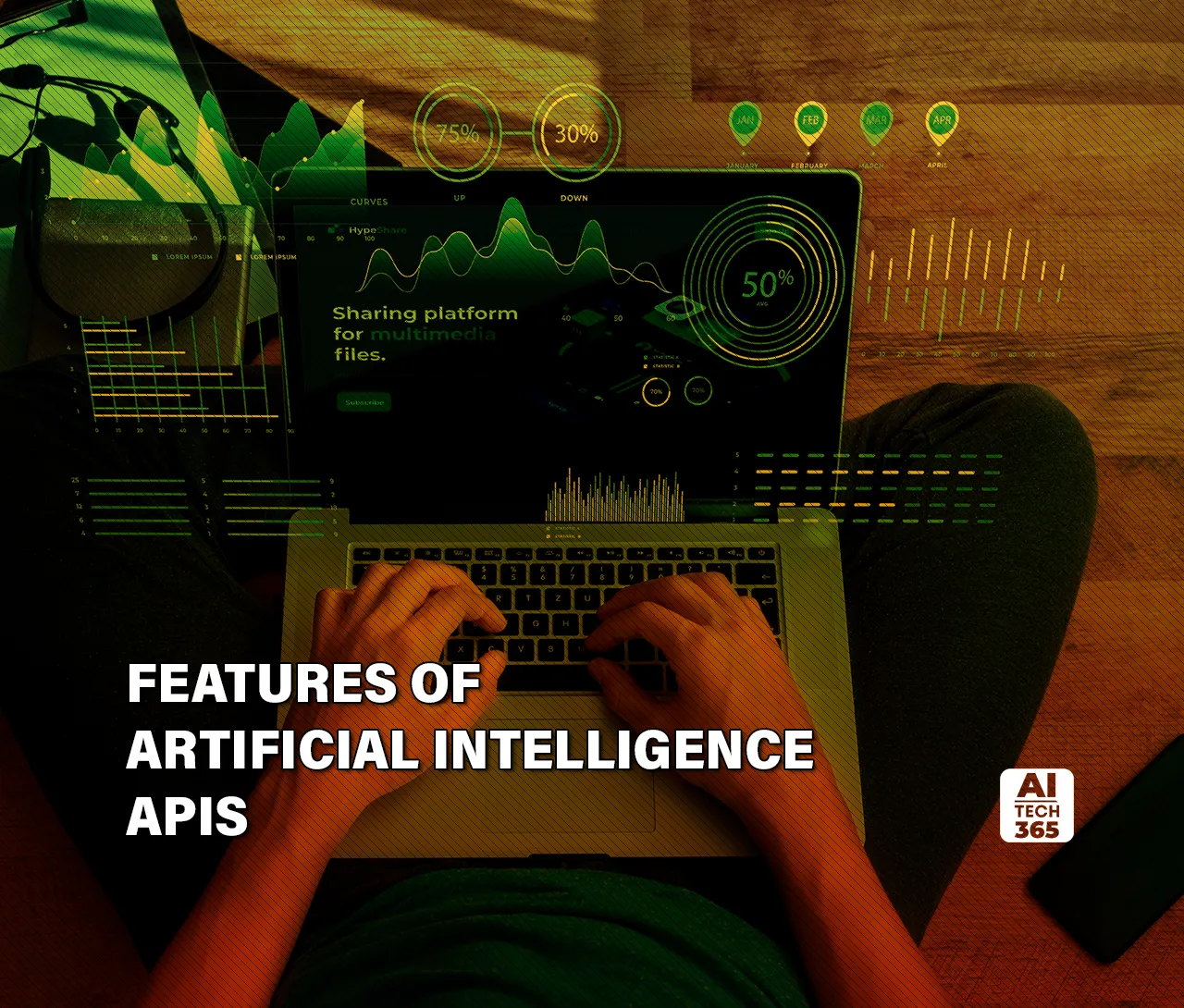The capacity of artificial intelligence (AI) to analyze massive volumes of data, spot patterns, and make astute predictions has made AI a game-changer for several businesses. The accessibility of AI APIs (application programming interfaces) is a major factor in the growing use of AI. With AI APIs, developers can quickly and cheaply include pre-built, usable AI capabilities into their apps, allowing them to take full advantage of AI’s potential without having to create intricate algorithms from scratch. Numerous features, including sentiment analysis, recommendation systems, picture identification, natural language processing, and more, are available through these APIs.
What are AI API’s?
Artificial intelligence application programming interfaces, or AI APIs, are ready-to-use software interfaces that give developers access to pre-built AI features. Developers no longer need to start from scratch when creating complicated algorithms to include AI capabilities in their applications. Developers may automate processes, enhance customer experiences, improve products, and decrease errors by utilizing this interface.
Numerous features are available including sentiment analysis, image identification, recommendation systems, natural language processing, and more. They make AI technology accessible and useful for developers of all skill levels, allowing organizations to fully capitalize on its potential.
How Do AI APIs Work?
Since APIs act as a middleman between two applications, it is important to ensure that data is transferred securely between the systems. AI can assist in this process by identifying security risks and cyberattacks. AI APIs combine several AI and machine learning (ML) methods to access server software or other applications and retrieve pertinent data. AI APIs can be used by developers to enhance applications with AI features and give them greater intelligence. A McKinsey report states that 56% of companies have already implemented AI in one or more business functions.
Types of AI APIs
AI APIs come in a variety of forms, each serving different purposes and applications. Here’s a detailed look at some of the key types:
- Computer Vision APIs Computer vision APIs leverage sophisticated machine learning algorithms to interpret visual media. They can identify objects, people, and faces, perform similarity searches, anonymize faces, and moderate explicit content. These APIs are pivotal in developing applications like image recognition systems, object detection tools, and video analysis platforms.
- Speech Recognition APIs Speech recognition APIs utilize advanced machine learning algorithms to comprehend spoken language. They enable the creation of voice-enabled applications such as voice assistants and transcription tools, converting speech to text and vice versa. These APIs support numerous languages and accents, often including additional features like speaker identification and language detection.
- Translation APIs Translation APIs use natural language processing (NLP) algorithms to detect and translate text from one language to another. They are essential for building applications like language translation tools, chatbots, and multilingual websites, facilitating seamless communication across different languages.
- Text APIs Text APIs employ NLP algorithms to analyze and interpret human language. They are versatile and can be used to create applications that manage text data. Common functionalities of text APIs include language detection, sentiment analysis, named entity recognition (NER), keyword extraction, summarization, question answering, syntax analysis, and text anonymization.
- Document Parsing APIs Document parsing APIs combine optical character recognition (OCR) and NLP to extract text and other relevant information from various documents such as resumes, invoices, receipts, and IDs/passports. This extracted information can then be used for tasks like text analytics, data extraction, or content management. Applications include document scanning and conversion tools, invoice processing systems, and more.
- Generative APIs Generative APIs are designed to create new content based on a set of inputs using machine learning algorithms. A typical application generates original content like articles or descriptions. These APIs are trained on large datasets of existing text, enabling them to produce new text that mimics the style and content of the training data.
Also Read: Autonomous AI Agents: Are These Independent Tools The Next Big Thing?
Features of Artificial Intelligence APIs
Below are the features and applications of AI APIs.
Facial Recognition
AI APIs like Kairos offer precise facial recognition capabilities, allowing developers to create applications that can identify faces with a high degree of accuracy.
Visual Search and Image Recognition
APIs such as Imagga provide machine-learning models that facilitate visual search, face recognition, tagging, cropping, coloring, and categorizing various types of images.
Natural Language Processing (NLP)
AI APIs enable applications to comprehend and respond to user inputs in a more human-like manner. NLP capabilities support tasks like sentiment analysis, content classification, and language understanding.
Intelligent Voice Interfaces
APIs like Wit.ai allow developers to incorporate intelligent voice interfaces into applications, enabling voice commands and interactions across various domains, including home automation, connected cars, smartphones, and wearables.
Machine Learning-powered Features
AI APIs, such as AlchemyAPI, offer a suite of deep learning-based cloud services, including sentiment analysis, entity extraction, concept tagging, image tagging, and facial detection/recognition.
Advanced AI Functionality
APIs provide access to advanced AI functionalities without requiring extensive knowledge of machine learning algorithms. Developers can integrate these APIs into their projects to harness the power of AI in areas like computer vision and natural language processing.
Winding Up
The key to releasing artificial intelligence’s full potential in the application development space is now AI APIs. These APIs have democratized access to cutting-edge technology by giving developers ready-to-use AI capabilities, enabling developers of all skill levels to construct clever and inventive apps. AI APIs will develop and grow further in the future, providing even more robust and specialized functions. We may anticipate a revolutionary effect across industries as AI is seamlessly incorporated into apps, changing data-driven decision-making, work automation, and technological interaction.


